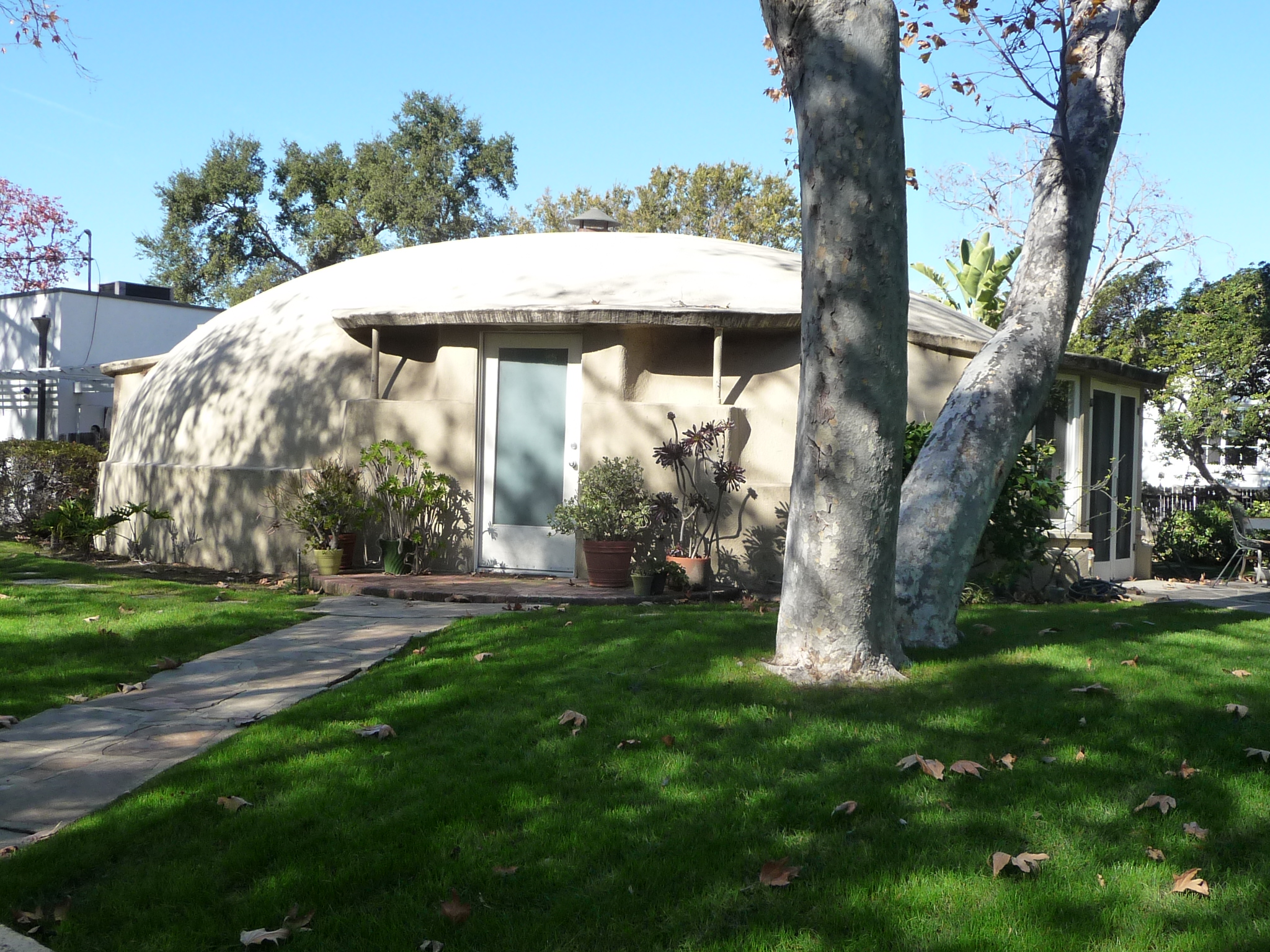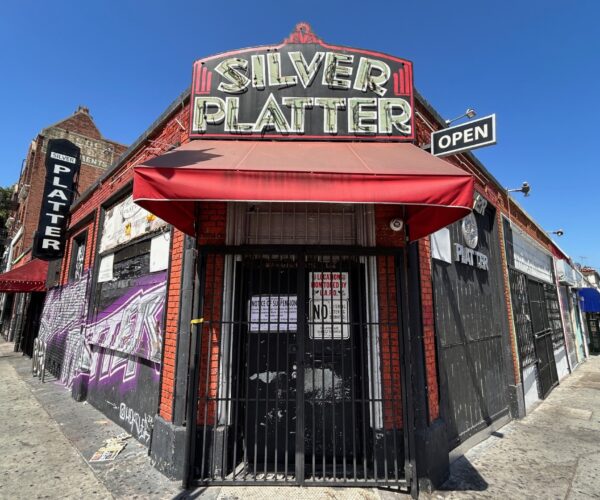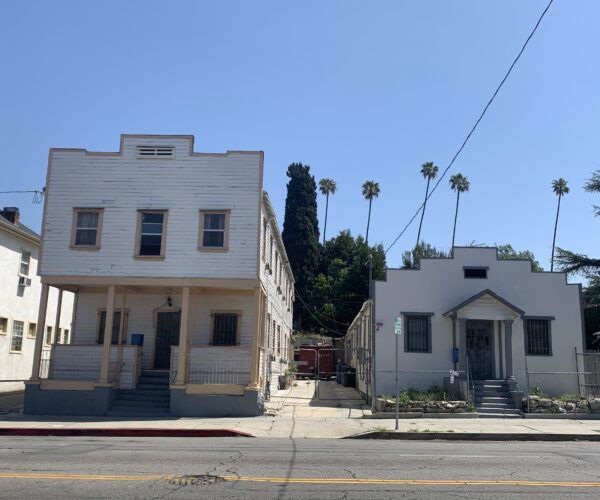
Place
Airform "Bubble House"
Met with mixed reviews upon its construction but since lauded by scholars and critics alike, this dome-shaped dwelling was considered by architect Wallace Neff to be the perfect solution to the mid-twentieth century global housing crisis.
Place Details
Address
Get directions
Architect
Year
Style
Decade
Designation
Property Type
City
Architect Wallace Neff designed grand Period Revival houses for some of California’s wealthiest and most famous residents, including Douglas Fairbanks, Jr., Groucho Marx, and Judy Garland. However, it has been said that nothing made Neff prouder than his modest Airform (or “bubble”) houses.
The idea for the Airform house came to Neff in the mid-1930s while shaving at the bathroom sink: “A soap bubble appeared and it held firm against my finger ... and it came to me, ‘Build with air.’” The architect believed that the dome-shaped dwelling was the perfect solution to the mid-twentieth century global housing crisis, as the construction was inexpensive, quick, and required no wood or nails. The Airform structure was erected using an inflatable balloon that was covered with chicken wire and then sprayed with gunite.
Despite Neff’s tireless campaign to convince the U.S. government and large industrialists to adopt the Airform house in their wartime housing initiatives, the igloo-like shape of the structure and perceived inefficient use of floor space deterred many from using his designs. Such aesthetic considerations did not seem to hinder Neff’s progress overseas; a number of Airform houses were constructed across the globe, from Senegal to Cairo to Rio de Janeiro.
The only remaining Airform house in the United States is located in Pasadena and has been lovingly restored and maintained by its current owners.
Constructed in 1946 and financed by Neff’s mother, the Pasadena Airform was met with mixed reviews by its neighbors, who felt that the elliptical structure did not fit in with the largely Period Revival neighborhood. However, the building was featured on the cover of the Los Angeles Times Home Magazine in 1947 and, as it reaches its seventieth birthday, has been celebrated by scholars and critics as a passionate and innovative response to the mid-century housing crisis.


